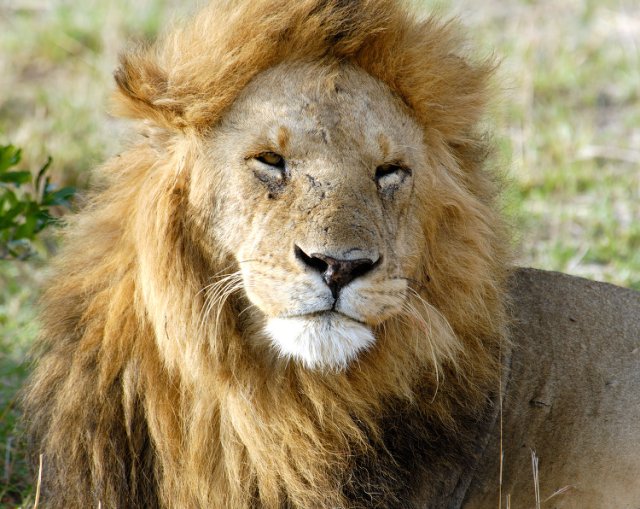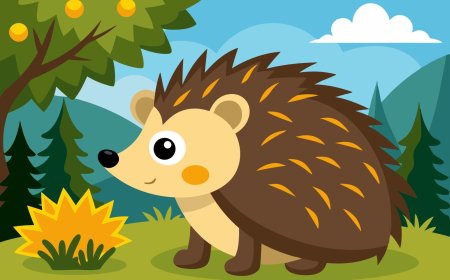Lions: The Ultimate Kids’ Guide– Facts, Habitat, and Fun Quiz
Discover amazing facts about lions for kids! Learn about lion prides, diet, habitats, and why they are called the King of Beasts. Enjoy vocabulary lists, quizzes, and fun facts in this ultimate educational guide.

Lion
Common Name: Lion
Scientific Name: Panthera leo
Distinctive Feature: Large, social cat with a majestic mane (in males) and known as the "King of Beasts"
Introduction
The lion is one of the most powerful and iconic animals in the world. Known as the "King of the Jungle" (even though it mostly lives in grasslands), the lion is a member of the big cat family, along with tigers, leopards, and jaguars. Lions are famous for their loud roars, golden fur, and, in males, their thick manes. These majestic animals symbolize strength, courage, and royalty in many cultures.
Lions are unique among wild cats because they live in groups called prides, making them the most social of the big cats. Found mainly in Africa, with a small population in India, lions are apex predators—at the very top of the food chain.
Physical Description
Lions are large, muscular cats with short, tawny coats that help them blend into dry grasslands. Adult males stand out with their manes, which can range from blond to black and grow thicker as the lion ages. Females do not have manes and are generally more slender and agile.
- Size: Males can weigh between 150–250 kg (330–550 lbs), while females weigh 100–180 kg (220–400 lbs).
- Height: About 1.2 meters (4 feet) tall at the shoulder.
- Tail: Long tails ending with a tuft of dark hair, which may help with communication.
- Teeth & Claws: Sharp teeth and retractable claws to help them hunt and defend themselves.
The lion’s roar can be heard up to 8 kilometers (5 miles) away—one of the loudest sounds made by any land animal.
Habitat and Distribution
Lions once roamed across Africa, Europe, and Asia. Today, most wild lions live in sub-Saharan Africa, in countries like Kenya, Tanzania, Botswana, and South Africa. A small group, the Asiatic lion, survives in the Gir Forest National Park in India.
They prefer savannas, grasslands, and open woodlands where there is plenty of prey and shade. Lions do not live in dense rainforests or deserts.
They are terrestrial, spending most of their time on land, though they can swim if needed.
Diet and Hunting Behavior
Lions are carnivores that eat zebras, wildebeests, antelopes, buffaloes, and even young elephants or giraffes if desperate.
Unlike most big cats, lionesses do the hunting. They work together to stalk and ambush prey. Males may help with large prey or protect the kill from other predators like hyenas.
Lions usually hunt at night or early morning when it’s cooler.
After a kill, lions eat quickly, with males eating first, followed by females and cubs.
Reproduction and Lifecycle
Lions can breed year-round. When a female is ready to mate, she and a male will spend several days together, mating many times a day.
- Gestation: About 3.5 months
- Litter Size: 1 to 4 cubs
- Cubs: Born blind and weigh around 1.5 kg (3.3 lbs)
- Cubs stay hidden in a den for the first 6–8 weeks.
After a few months, cubs join the pride. Lionesses often help each other raise their young. Cubs start eating meat at about 3 months old and nurse up to 6 months.
Males leave their birth pride when mature and may fight to take over another.
Wild lions live about 10–14 years; in captivity, they can live over 20 years.
Behavior and Social Structure
Lions are the only truly social cats. A pride typically includes:
- 1–3 adult males
- 5–10 females
- Their cubs
Females are often related and stay together for life. Males may fight to take over a pride and sometimes kill cubs to bring females into heat.
Lions rest up to 20 hours a day, being most active at dawn and dusk.
They communicate with roars, grunts, growls, and body language.
Conservation Status
Lions are listed as Vulnerable. Major threats include:
- Habitat loss (farming and development)
- Conflict with humans (protecting livestock)
- Poaching (body parts or trophies)
- Disease and climate change
There are about 20,000 wild lions in Africa and fewer than 700 Asiatic lions in India.
Conservation programs work to protect habitats, reduce conflict, and promote eco-tourism.
Cultural Significance
Lions have been powerful symbols throughout history:
- In Ancient Egypt, lions represented war and protection.
- In Europe, lions appear in coats of arms, flags, and fairy tales.
- Lions feature in modern stories and films like The Lion King.
They are also mascots for strength and teamwork.
Vocabulary
| Word | Definition |
|---|---|
| Pride | A group of lions living together. |
| Carnivore | An animal that eats meat. |
| Apex Predator | An animal at the top of the food chain with no natural predators. |
| Gestation | The period when an animal carries its young before birth. |
| Mane | The thick hair around a male lion’s neck and head. |
| Territorial | Protecting a specific area as one’s own. |
| Conservation | Efforts to protect animals, plants, and habitats. |
| Vulnerable | At risk of becoming endangered. |
Interesting Facts
- 🦁 A lion’s roar can be heard up to 8 km (5 miles) away.
- 👑 Male lions grow manes—the darker, the healthier.
- 🐾 Lions can run up to 50 mph (80 km/h), but only briefly.
- 🌡 Lions rest up to 20 hours a day.
- 🏞 Asiatic lions have shorter manes and a belly skin fold.
- 🧼 Lions groom each other to bond and clean.




















































